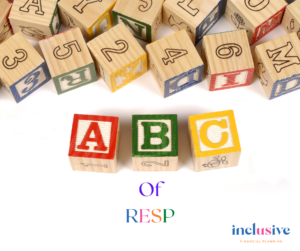The ABCs of RESPs

Registered Education Savings Plans are one of the most helpful ways to save for your child’s post-secondary education. There’s plenty of benefits to a RESP, but they’re not always easy to navigate. They’re also all not created equally! Which can make it hard to know if you’re making the right choice.
Grants, Bonds, and Benefits
- Top up to every dollar contributed: Each child under 15 is eligible for a 20% top up on every contribution until the end of the year they turn 17.
- If you’re starting a plan for a child who is 16 or 17 there are special rules.
- Additional money on your first contributions: If your adjusted household income is below $50,197 for 2022 you can receive an extra 20% on the first $500 contributed. If your income is below $100,392 you can receive an additional 10% on that first $500 contributed.
- Extra contributions without paying into the plan: The Canada Learning Bond is helpful for lower income households, where you can receive up to $2,000 without contributing anything to an RESP.
Not every RESP is the same
There’s a lot of particulars when it comes to an RESP so it’s incredibly important that you understand how they work before you start contributing to one. You also want to make sure using the plan to it’s maximum, for most people that means only contributing when you’re receiving that grant money. It’s also good to understand the rules for the plan you’re investing into.
- Is it flexible?
- Can you stop contributing if you need to?
- Are you able to change your contributions as you see fit?
- Is it affordable?
- Is your money invested from the first dollar or are you paying fees?
- Is it effective?
- Are you free to invest in a way that meets your needs and accomplishes your goals?
It’s always best to have more control, life is rarely so kind as to move in a straight line. Having an RESP that puts you in the driver’s seat is incredibly important.
Family Plans
If you have more then one child, it can be incredibly impactful to use a family plan, this allows the grant money to be used for any of your children. This can help ensure you maximize the benefit for all of your children, if one child doesn’t end up using as much as you’d expected, your other children can still benefit from your good planning!
